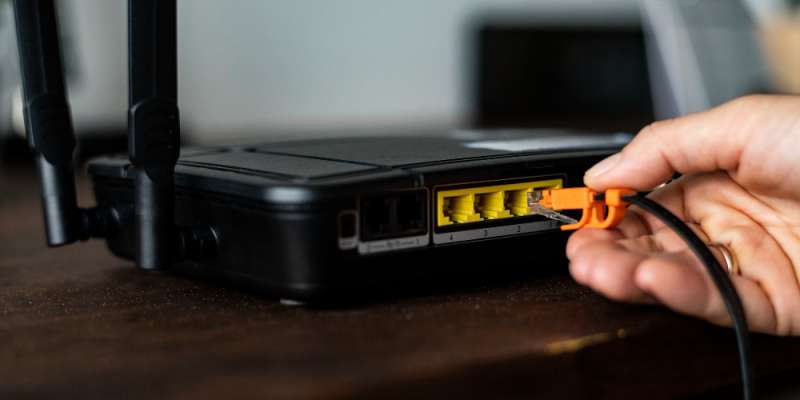With the increasing reliance on the internet for work, entertainment, and communication, choosing the right broadband plan for your home is essential. With the number of options available in Singapore, selecting the most suitable plan can be a daunting task.
It is essential to understand your needs and consider the various factors involved in choosing the best broadband plan to ensure that you get the most value out of your money. This article will guide you through the process of selecting the best plan for your needs and help you make an informed decision.
What is a broadband plan?
A broadband plan is a contract that allows you to access high-speed internet via a wired or wireless connection at a specified monthly data allowance.
The connection type depends on the type of broadband plan that you select. A broadband plan may also include additional services such as voicemail, call waiting, caller ID, call forwarding, call conferencing, call waiting (double), caller ID, call waiting double, call forwarding, call conferencing, call return, and voicemail.
Broadband plans are typically available on a contract basis, with a termination fee payable if you choose to end the contract before the end of the contracted period.
Some broadband plans may have a non-contract option, which means you can end the plan at any time without incurring any termination fee.
Also check-out: fibre broadband Singapore review
Factors to consider when choosing a broadband plan
When selecting a broadband plan for your home, it is important to analyse your needs and select a plan that best meets your requirements. There are various factors to consider when selecting a broadband plan, including data allowance, connection type, additional features and cost.
- Data allowance – With the increasing number of people using the internet for communication and entertainment, you need to be mindful of the amount of data that you consume. A low data allowance may not be suitable if multiple people in your household use the internet regularly.
- Connection type – The different connection types include wired, Wi-Fi, and fibre. Wired connections are generally slower and more stable, while Wi-Fi connections are faster and more prone to interruption. Fibre connections are the fastest of all the connection types, with fibre-to-the-home (FTTH) connections being the fastest of all.
- Additional features – Additional features such as free installation, parental controls, and anti-virus software may be available for an additional fee.
- Cost – The cost of the broadband plan includes the upfront one-time installation fee and the monthly subscription fee.
Types of broadband plans
Broadband plans can be divided into two categories – unlimited and usage-based plans.
- Unlimited broadband plans – These plans promise that there is no limit on the amount of data that you can use each month. However, be aware that some providers can throttle or reduce the speed of your connection if they detect that you are using a significant amount of data.
- Usage-based broadband plans – With these plans, you pay a set amount for the data that you use each month.
Broadband plans can also be classified based on the connection type. These include wired broadband, Wi-Fi broadband, and fibre broadband.
- Wired broadband – Wired broadband connections use copper wires to transmit data. This type of connection is generally slower but more stable than Wi-Fi connections. Wired broadband is typically delivered via an RJ45 cable.
- Wi-Fi broadband – Wi-Fi broadband uses radio waves to transmit data. It is a popular connection type and can be used to provide internet access to multiple devices at once.
- Fibre broadband – Fibre broadband is the fastest connection type available in Singapore. It uses fibre optic cables to transmit data at extremely high speeds. Fibre broadband can be used both at home and while on the go.
Different broadband providers in Singapore
There are a total of 24 internet service providers (ISPs) in Singapore. Among them, the three largest providers have a significant market share of around 80%.
- Singtel – Singtel provides fibre-based broadband services through its Fibre Broadband plan. It has a fibre-to-the-curb (FTTC) network, which means that the fibre optic cable is installed up to the outskirts of the house and the rest of the connection is wireless.
- StarHub – StarHub offers a variety of broadband plans to meet different needs. It has plans with speeds ranging from 2 Mbit/s to 1 Gbit/s. The StarHub SuperFast Fibre plans come with unlimited data usage, installation and activation fee waiver, and a free router.
- M1 – M1 offers a variety of fibre-based broadband plans through its Fibre Broadband service. The plans come with a complimentary router and a two-year warranty.
How to compare broadband plans
There are a few steps you can follow to compare different broadband plans and find a plan that best meets your needs.
- Research – It is important to research the different broadband plans available in the market to get a better idea of the different options available to you. This will help you understand the different features of the plans and the costs involved in each plan.
- Look at the data allowance – The amount of data allowance included in the plan will determine how many people can use the internet at the same time without incurring data charges.
- Choose a connection type – If you are considering a fibre-based plan, make sure that your home is fibre-ready. If not, you can choose a Wi-Fi or wired connection.
- Compare additional features – Additional features like caller ID, voicemail, and anti-virus software may be available for an additional monthly fee.
- Estimate your monthly cost – Once you have shortlisted a few plans, you can estimate the total cost for the next 12 months to get an idea of the overall expenses.
How to select the best broadband plan for your home
Once you have shortlisted a few broadband plans that meet your requirements, you can proceed to select the best plan for your home.
Here are a few things you can do to help you make an informed decision.
- Compare the terms and conditions of the plans – A quick review of the terms and conditions of each plan will help you understand the value proposition of each plan. This will also help you identify any significant differences between the plans.
- Check the availability of plans in your area – Availability of plans varies from one area to another. Before selecting a plan, make sure that the plan is available in your area. You can do this by clicking on the “Check Availability” button on the website of your preferred broadband provider.
- Compare the Broadband Complaints Bureau (BCB) statistics – You can also refer to the statistics published by the Broadband Complaints Bureau (BCB) to understand the quality of service provided by each provider.
Tips for making the most of your broadband plan
- Prioritise what you want to do online – If you have a limited data allowance, it is important to prioritise which activities you want to do online, such as watching videos or listening to music.
- Use Wi-Fi for data-intensive activities – It is generally a good idea to use a wireless connection rather than a wired connection when conducting data-intensive activities. This will help you reduce the amount of data consumed and minimise the impact on your monthly data allowance.
- Consider purchasing a mobile hotspot device -If you need to use the internet while away from home, you can consider purchasing a mobile hotspot device, which can allow you to share your connection with multiple devices.
Need some money urgent money for upcoming bills, you may consider looking for personal loan for low income in Singapore. Also find more about 24 Hours Money Lender in Singapore.






